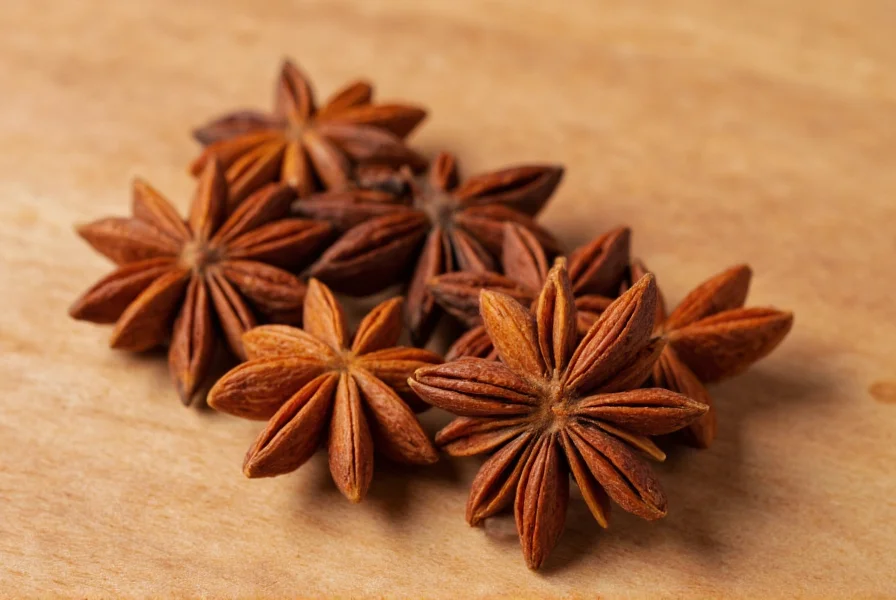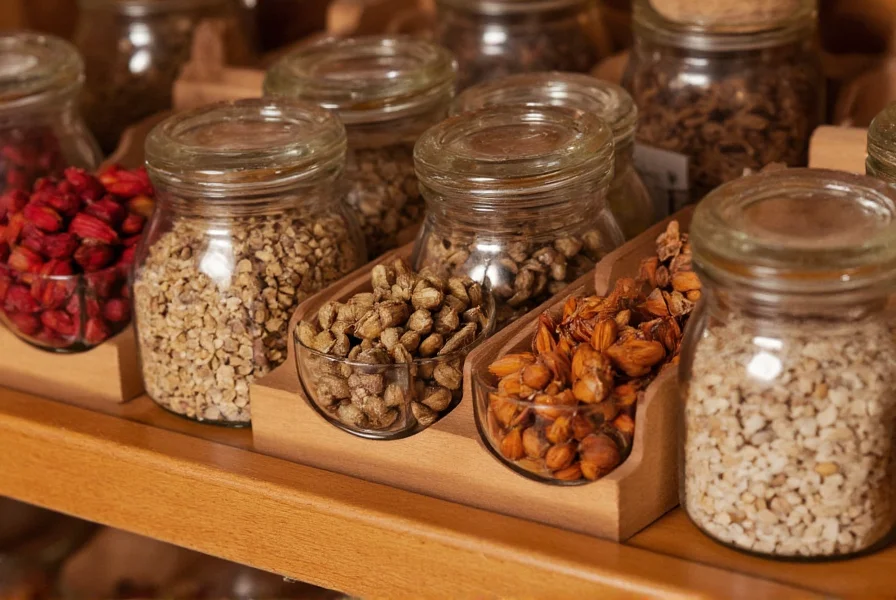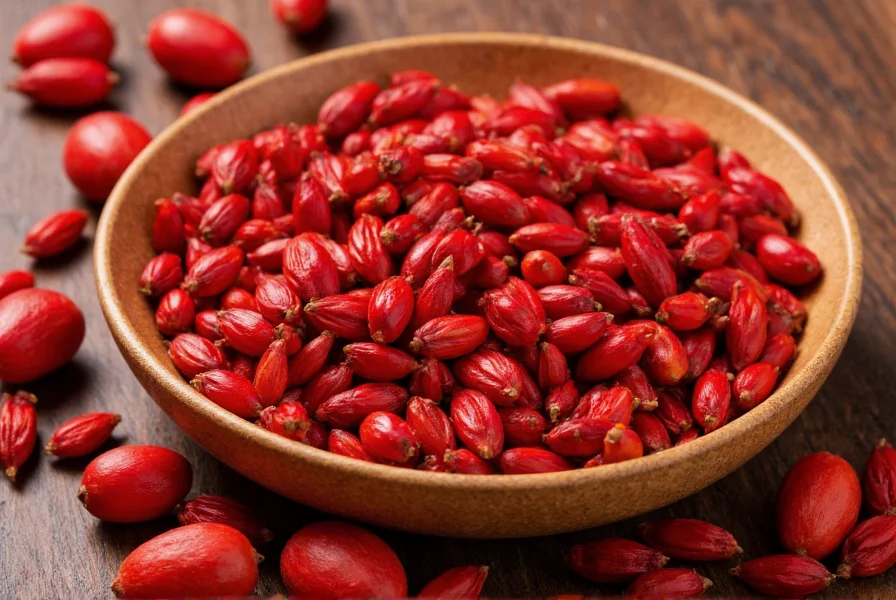When exploring the world of aromatic spices, few ingredients generate as much confusion as Chinese anise. Many home cooks mistakenly believe Chinese anise refers to a different variety than star anise, but they are one and the same. Understanding this distinction represents the first step toward properly utilizing this remarkable spice in both culinary and wellness applications.
Botanical Identity and Physical Characteristics
Illicium verum, the botanical name for Chinese anise, belongs to the Schisandraceae family. The spice consists of the dried fruit of a small evergreen tree native to subtropical regions of China and Vietnam. Each fruit develops into a distinctive star shape with 6-8 pointed carpels, typically measuring 2.5-4 cm in diameter. When harvested young and green, the spice dries to a deep reddish-brown color while maintaining its characteristic shape.
The most valuable component of Chinese anise is anethole, which constitutes 70-90% of its essential oil content. This compound creates the powerful licorice-like aroma and flavor that makes Chinese anise indispensable in many culinary traditions. Unlike regular anise seeds, which come from a completely different plant family (Apiaceae), Chinese anise delivers a more complex flavor profile with subtle notes of camphor and citrus.

Distinguishing Chinese Anise from Similar Spices
Three spices commonly cause confusion in Western kitchens: Chinese anise (star anise), regular anise, and Japanese star anise. Understanding these differences proves essential for proper culinary application and safety:
| Spice Type | Scientific Name | Appearance | Flavor Profile | Safety |
|---|---|---|---|---|
| Chinese anise (star anise) | Illicium verum | 8-pointed star, reddish-brown | Strong licorice with subtle citrus notes | Safe for culinary use |
| Regular anise | Pimpinella anisum | Small oval seeds, green-gray | Sweeter, milder licorice flavor | Safe for culinary use |
| Japanese star anise | Illicium anisatum | 10-12 pointed star, darker brown | Similar appearance but toxic | Potentially dangerous |
Japanese star anise (Illicium anisatum) presents a serious safety concern as it contains sikimitoxin, a neurotoxin that can cause severe health issues. Always purchase Chinese anise from reputable sources to avoid accidental substitution with this toxic variety.
Culinary Applications of Chinese Anise
Chinese anise serves as a cornerstone ingredient in numerous culinary traditions across Asia. In Chinese cuisine, it forms one of the five components of the essential five-spice powder, along with cloves, fennel seeds, Sichuan pepper, and cinnamon. This blend appears in braised dishes, marinades, and roasted meats, particularly in recipes for red-cooked pork and duck.
Vietnamese cooks rely heavily on Chinese anise for pho, the national soup dish. The spice contributes to the complex aromatic base that defines authentic pho broth. Similarly, Indian cuisine incorporates Chinese anise in garam masala blends and certain biryani recipes, though less prominently than in East Asian cooking.
When using Chinese anise in cooking, remember that whole pods provide more nuanced flavor than ground spice. Chefs typically add whole pods early in the cooking process to allow flavors to infuse gradually, then remove them before serving. For best results in baking or spice blends, toast the whole pods lightly before grinding to enhance their aromatic compounds.
Traditional Medicinal Uses and Modern Research
Traditional Chinese Medicine has utilized Chinese anise for centuries to address digestive issues, respiratory conditions, and as a general tonic. Practitioners commonly prepare it as a tea to alleviate bloating, gas, and mild stomach discomfort. The spice also appears in traditional remedies for coughs and colds, often combined with other warming herbs.
Modern research supports several traditional applications of Chinese anise. Studies indicate that trans-anethole, its primary component, demonstrates antimicrobial properties against certain bacteria and fungi. Research published in the Journal of Agricultural and Food Chemistry suggests Chinese anise extract may help reduce inflammation and oxidative stress.
Scientists have also investigated Chinese anise's potential role in managing blood sugar levels. A 2020 study in Phytotherapy Research noted that certain compounds in Chinese anise might improve insulin sensitivity, though more research remains necessary before making definitive health claims.
Selecting, Storing, and Using Chinese Anise
When purchasing Chinese anise, look for whole pods with a deep reddish-brown color and intact points. Avoid pieces with broken tips or excessive dust, which may indicate age or poor handling. The spice should emit a strong, sweet aroma when crushed between your fingers. For maximum freshness, buy from stores with high turnover of spices.
Proper storage significantly extends Chinese anise's shelf life. Keep whole pods in an airtight container away from light and heat. Under these conditions, they maintain optimal flavor for 1-2 years. Ground Chinese anise loses potency more quickly and should be used within 6 months. Never store Chinese anise in the refrigerator, as moisture can cause mold growth.

Safety Considerations and Potential Interactions
While Chinese anise remains safe for culinary use, certain precautions warrant attention. The spice contains shikimic acid, the primary ingredient used in manufacturing the antiviral medication oseltamivir (Tamiflu). Though consuming Chinese anise won't provide therapeutic antiviral effects, this connection sometimes leads to misinformation about its medicinal capabilities.
Pregnant women should moderate their consumption of Chinese anise, as excessive amounts might stimulate uterine contractions. Individuals taking blood thinners should consult their healthcare provider before using Chinese anise medicinally, as it may interact with anticoagulant medications. As with any spice, allergic reactions, though rare, can occur.
The most significant safety concern involves potential confusion with Japanese star anise (Illicium anisatum), which contains toxic compounds. Always purchase Chinese anise from reputable sources and avoid any product with an unusually bitter aftertaste or 10-12 pointed stars, which indicate the toxic variety.
Integrating Chinese Anise into Modern Cooking
Contemporary chefs increasingly recognize Chinese anise's versatility beyond traditional Asian recipes. The spice complements fruit-based desserts, particularly poached pears or baked apples, where its warm notes enhance natural sweetness. Mixologists incorporate Chinese anise into syrups for craft cocktails, adding complexity to both spirit-forward and refreshing drinks.
Home cooks can experiment with Chinese anise in unexpected applications: add a single pod to coffee while brewing for a subtle aromatic twist, infuse it in simple syrup for cocktails or desserts, or include it in homemade vanilla extract for added depth. Remember that Chinese anise has a powerful flavor, so start with small amounts—typically one whole pod per serving—and adjust to taste.
Frequently Asked Questions
What's the difference between Chinese anise and star anise?
Chinese anise and star anise refer to the same spice (Illicium verum). The name "Chinese anise" specifically denotes star anise that originates from China, though the plant also grows in Vietnam. Despite the name, it's not related to true anise (Pimpinella anisum), which comes from a different plant family and has a milder flavor profile.
Can I substitute regular anise for Chinese anise in recipes?
You can substitute regular anise for Chinese anise, but with important considerations. Use 3/4 teaspoon of ground regular anise for each whole Chinese anise pod. Remember that Chinese anise delivers a more complex flavor with subtle citrus notes, while regular anise offers a sweeter, milder licorice taste. The substitution works best in baking but may alter the authentic flavor profile in traditional Asian dishes.
Is Chinese anise safe for children?
Chinese anise is generally safe for children when used in normal culinary amounts. However, avoid giving children Chinese anise tea or extracts intended for medicinal purposes without consulting a pediatrician. The American Academy of Pediatrics recommends against using herbal remedies containing anise compounds for infants due to potential neurological effects.
How can I tell if my Chinese anise has gone bad?
Fresh Chinese anise should have a strong, sweet licorice aroma. If the spice has lost its distinctive scent or developed a musty smell, it has likely degraded. Visually, the pods should maintain their deep reddish-brown color; fading to a lighter brown indicates age. Properly stored whole pods remain potent for 1-2 years, while ground Chinese anise loses flavor within 6 months.
Can Chinese anise help with digestion?
Traditional medicine systems have used Chinese anise for digestive support for centuries. Modern research suggests that anethole, its primary compound, may help relax gastrointestinal muscles and reduce bloating. A 2019 study in the Journal of Ethnopharmacology found that Chinese anise extract demonstrated antispasmodic effects in laboratory tests. However, more human studies are needed before making definitive therapeutic claims.











 浙公网安备
33010002000092号
浙公网安备
33010002000092号 浙B2-20120091-4
浙B2-20120091-4